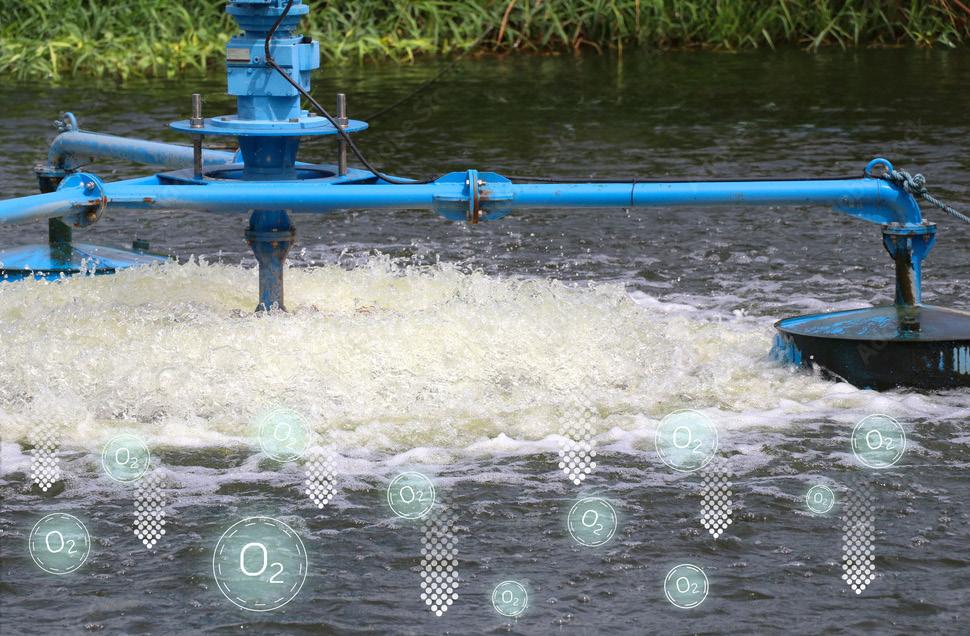
5 minute read
The Heat Is On
How to keep your association’s lakes and ponds healthy during the summer months. The key: dissolved oxygen.
By Patrick Simmsgieger
Did you know?
Dissolved oxygen is one of the most vital components of any aquatic ecosystem and is largely defined by the water temperature at the time. As temperature increases, dissolved oxygen decreases in the water. For instance, in a small lake, the water at the surface is going to be the warmest in the lake, so it will also have the least amount of oxygen. Descending, water starts to get much colder, and accordingly, this is where the highest amount of available oxygen is found. This difference in oxygen content is due to the solubility of water, which increases as temperature decreases, allowing more oxygen to be dissolved into a form that aquatic life can utilize.
During the summer surface water is at its hottest, so fish will move to deeper sections of their system to access higher levels of oxygen. In a well-balanced environment, fish can make this move without harm, staying deeper until temperatures start to cool off and oxygen levels return to a more favorable distribution. Unfortunately, this balance can be easily disrupted, and the consequences can be severe for aquatic organisms.
Algae Blooms
One of the most common problems lakes and ponds have during the summer is algae blooms. Many algae species react quickly to raised temperatures and will bloom in huge numbers if they have sufficient nutrients to do so. Algae are photosynthetic, meaning during the day, oxygen is produced, just like with terrestrial plants. However, at night, algae does not photosynthesize but instead switches around and pulls oxygen from the water. If a bloom is large enough, this oxygen demand can be much more than the water can actually provide. In this case, not only do other aquatic organisms die off, but so do all of the algae.
Decomposition
Another major factor that affects oxygen levels is organic matter decomposition. Organic matter can be leaf clippings, dead algae, or even bird droppings. Whatever it is, when it gets in the water, it sinks to the bottom and decomposes. Decomposition also uses up a large amount of oxygen and can make life for aquatic organisms even more challenging when the weather is hot and oxygen levels are already low.
Watch out in the summer
If there is too much of any process with high oxygen demand, creatures like fish can end up in a situation where there is simply nowhere to breathe. In the summer, when the surface water is already low in oxygen, and excesses of algae or organic decomposition are taking the oxygen from the bottom, fish dying is, unfortunately, a common occurrence. Fish and other aquatic organisms need available oxygen, and this can only be maintained year-round through healthy circulation, keeping waste out of the water, and monitoring algae populations. Freshwater systems can support incredible ecosystems, but they need balance, and sometimes, it can take just one bad day for a beautiful ecosystem to collapse.
Aeration to the rescue
One of the best long-term ways to lower the chances of experiencing those bad days is to introduce aeration. Aeration is a great way to introduce oxygen into the water column, increasing the amount available and areas where aquatic creatures can easily breathe. There are multiple ways to introduce oxygen into water, but two of the standards are diffusers and fountains.
Diffusers are one of the most beneficial additions to ponds and lakes because they efficiently oxygenate water. Diffusers take oxygen-infused water, forcing it to mix with the rest of the system. By doing this, high oxygen water gets dispersed throughout the system bringing up the average level of oxygen available for breathing. Once the diffuser is established in the ecosystem, the water should be much more livable for many aquatic organisms year-round, as they are better equipped to handle seasonal changes and other pressures.
Fountains are another great addition because they are not only aesthetically pleasing but also help aerate water in their way. They are not dedicated aerators like diffusers since they mostly pull water from the upper few feet of water, but they can still help. While they likely won’t affect oxygen content in a deeper system, in shallower bodies of water like ponds, fountains can make a serious difference in the introduction of oxygen to water.
Tips for installing aeration
There are many different factors affecting dissolved oxygen in water, and there are many ways to maintain and increase it. Proper aeration is generally an effective way to address this problem, but it does require some thought. Before installation, it is best to be familiar with the physical aspects of the water and surrounding landscape as well as to know the water quality. Having this knowledge makes it easier to choose the approach that that most effectively addresses ecological issues, cuts down on labor time, and saves money.











